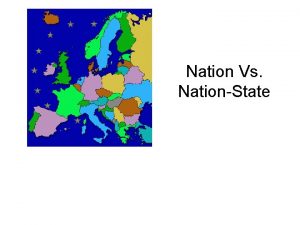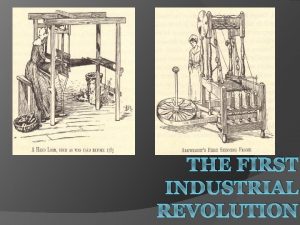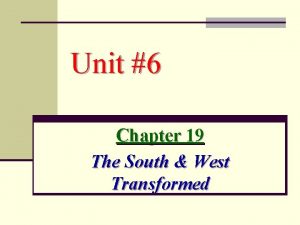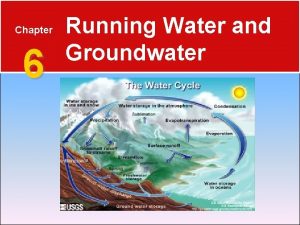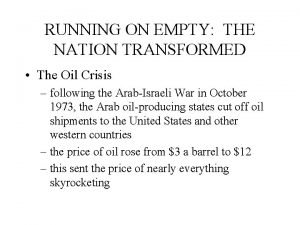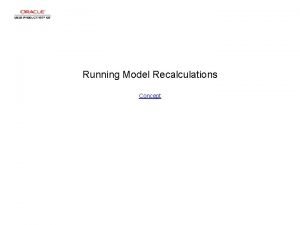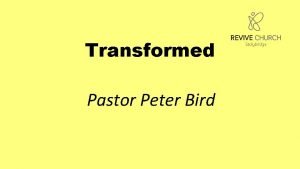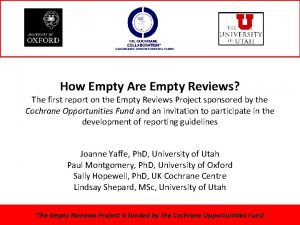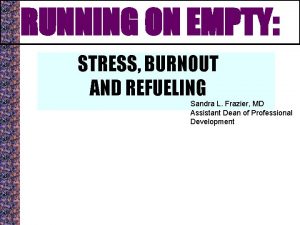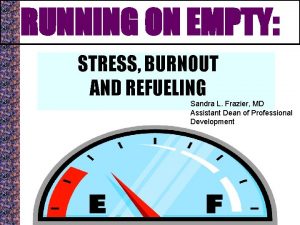RUNNING ON EMPTY The Nation Transformed Chapter 32
























































- Slides: 56

RUNNING ON EMPTY: The Nation Transformed Chapter 32 The American Nation, 12 e Mark C. Carnes John A. Garraty © 2006 Pearson Education, Inc.

YOM KIPPUR WAR • 6 October 1973: on the eve of Yom Kippur, Egypt and Syria attacked Israel – Six years earlier Israel had trounced the Egyptians with humiliating ease and taken the Sinai Penninsula – Now Egypt threatened to slice Israel in half – Syrian troops advanced against Israel farther north – Israeli Prime Minister Golda Meir pleaded with Nixon for additional arms and aircraft – Nixon airlifted scores of fighter planes and other needed supplies – Israelis recrossed the Suez Canal, cut Egyptian supply lines and forced Egyptian president, Anwar Sadat, to capitulate • Arab states cut off oil to U. S.

THE OIL CRISIS • Deprived of Middle Eastern oil, American economy sputtered – Price of oil rose to $12 a barrel from $3 – Sent prices soaring for everything else – Homes were heated with oil; factories were powered by it; utility plants used it to generate electricity; nylon and other synthetic fibers, paints, insecticides, fertilizers and many plastic products were made from it; and it made gasoline for cars and trucks

THE OIL CRISIS • By time of Yom Kippur War, Americans were driving more than a trillion miles a year – U. S. , formerly a major oil exporter, imported one-third of its oil • Oil embargo pushed up gasoline prices – Service stations ran out of gas – Long lines formed

THE OIL CRISIS • In spring of 1974, Henry Kissinger negotiated an agreement that required Israel’s withdrawal from some territory occupied since the 1967 war – Arab nations lifted the oil embargo – Principle oil exporting nations—Venezuela, Saudi Arabia, Kuwait, Iraq and Iran—had learned a valuable lesson: if they limited production they could drive up the price of oil – After the end of the embargo the Organization of Petroleum Exporting Countries (OPEC) announced another price increase and gasoline prices doubled overnight

THE OIL CRISIS • American car makers who had scoffed at VW Beetles and tiny Japanese cars, now suffered as these competitors claimed the new market for small, fuelefficient, front-wheel drive cars – American auto makers could not respond to challenge because their contract with the United Auto Workers (UAW) linked wages to consumer prices – As production costs rose, manufacturers needed to sell more of their behemoth models, loaded with expensive options – Could not profitably sell small cars – By the end of the 1970 s, the Japanese had 30% of the American automobile market

FORD AS PRESIDENT • Ford was hard working, untouched by scandal and Democrats in Congress liked him • Ford identified inflation as the chief economic culprit and asked patriotic citizens to signify their willingness to fight it by wearing WIN (Whip Inflation Now) buttons – Almost immediately economy suffered big slump – Production fell and unemployment rate rose above 9% (twice postwar average) – President was forced to ask for tax cuts and other measures aimed at stimulating business activity – This made inflation worse and did little to promote employment

THE FALL OF SOUTH VIETNAM • January 1975: after two years of a bloody “cease fire”—Hanoi charged Saigon with 301, 000 violations and Saigon charged Hanoi with 35, 673 — North Vietnam initiated a two-year plan to conquer South Vietnam by striking across the 17 th parallel – South Vietnamese army fell back then fled and finally dissolved – As military situation deteriorated, Ford urged Congress to send arms to South Vietnam – Legislator refused to do so – 1 May 1975: North Vietnamese and Viet Cong entered Saigon (renamed Ho Chi Minh City) and Vietnam War was over

FORD VERSUS CARTER • Democrats chose James Earl “Jimmy” Carter to run in 1976 – Rise was made possible by television, the democratization of the delegate-selection process, and the absence of a dominant leader among the Democrats – As governor of Georgia, Carter had a reputation for treating blacks fairly – Emphasized his lack of connections with Washington establishment – Called attention to his integrity and deep religious faith • Sought to make election referendum on morality

FORD VERSUS CARTER • Nixon’s and Kissinger’s actions in Chile were a sign of what not to do – Tried to prevent the election of Marxist Salvador Allende in 1970 – After his election, had the CIA work to destabilize regime – 1973: Allende was murdered in a military coup • Ford was opposed in the Republican campaign by former California governor, Ronald Reagan – Reagan and the Republican platform denounced the secret machinations of Kissinger

FORD VERSUS CARTER • Ford defeated Reagan but it was close and boded ill for the November election • Carter won with 297 electoral votes to 241 – Carried most of South, including Texas, and a few large industrial states – Key element in victory was he had gotten an overwhelming majority of the black vote – Also ran well in districts dominated by labor unions – Desire by some to punish the party of Richard Nixon probably also helped

A NATIONAL MALAISE • Carter believed a “moral and spiritual” crisis had sapped people’s energies and undermined civic pride • Economic downturn had more fundamental causes than the energy shortage – Many companies had become big and complacent – Worker boredom lowered productivity and increased absenteeism • Doubled at Ford and GM in 1960 s • On average day at GM in 1970, 5% of workforce was absent without an explanation and on Mondays and Fridays figure rose to 10%

A NATIONAL MALAISE • In 1972, worker discontent boiled over at the GM assembly division in Lordstown, Ohio, where GM had installed robotic welding machines, streamlined the workforce and accelerated the assembly line to 100 cars an hour rather than 60 – Without authorization from the UAW, younger workers refused to work at the faster pace • Younger workers were dissatisfied with aging union leaders and a system that tied wage increases to seniority – – 1950 s: one in three non-agricultural workers were in unions 1978: one in four 1990: one in six By 1978, unions were losing three-fourths of their campaigns to represent workers and many workers who belonged were opting to get out – Every year 800 more union shops voted to rescind their affiliation

STAGFLATION: The Weird Economy • For the first time in the nation’s history, rising unemployment did not prevent inflation—anomaly was called stagflation – 1971 inflation was 5% – 1975: 11% – 1979: peaked at 13% – Unemployment ranged from 6 to 10% • Carter had promised to fight inflation by reducing government spending and balancing the budget and to stimulate the economy by cutting taxes

STAGFLATION: The Weird Economy • Carter advanced a plan for conserving energy and reducing dependence on foreign oil – Raise tax on gasoline and impose a new tax on “gas guzzlers, ” cars that got relatively few miles per gallon – In typical fashion, did not press hard for these measures • Congress raised the minimum wage and pegged social security payments at the cost of living index – Helped the poor and pensioners but made it difficult to balance the budget – Increased spending power of recipients pushed prices up further

STAGFLATION: The Weird Economy • Social welfare spending more than doubled during the decade – 1970: $8. 7 billion – 1980: $72. 7 billion • Federal government made matters worse – Wages and salaries rose in response to inflation but taxes went up more rapidly because higher incomes put people in higher tax brackets • Caused taxpayer revolts – Federal borrowing to cover the deficit pushed up interest rates and increased the costs of all businesses that had to borrow

STAGFLATION: The Weird Economy • Soaring mortgage rates made it difficult to sell homes – Housing slump meant unemployment for construction workers and bankruptcy for many builders • Double-digit interest rates made it difficult for small businesses looking to expand • Savings and Loans were especially hard hit as they had large number of low interest mortgages they were holding and they had to pay much more to hold deposits and offer even higher rates to attract new money

FAMILIES UNDER STRESS • Inflation got worse in 1979 when further instability in the Middle East nearly tripled the price of oil to $34 a barrel – Sent gasoline far over $1 a gallon – Ford stock plummeted from 32 in 1978 to 16 and its credit rating fell from AAA to BBB – Chrysler tottered near bankruptcy and was saved only by a $1. 2 million federal loan guarantee – From 1978 to 1982 the jobs of one in three auto workers were eliminated

FAMILIES UNDER STRESS • When workers, mostly men, lost high paying jobs in the auto industry and steel mills, spouses had to help compensate by taking low paying jobs in restaurants, retail stores and offices – 1950: one in four married women worked outside the home – 1980: half did – By 1976, Mc. Donald’s employed more people than the steel industry

FAMILIES UNDER STRESS • Millions of women who had their consciousness raised and expected to move up corporate ladder found that lower rungs of ladder were first cut in a recession – Many abandoned the idea of a career and settled for a lowpaying, dead-end clerical or service job • Some women, especially well-educated women, achieved strong gains in 1970 s – Female lawyers jumped from 5 to 12% – Accountant went from 25 to 33% • Women were increasingly divided – Into an intellectual and professional elite eager to prove their merits on the job in fair competition with men – An underpaid and ill-used underclass, vulnerable to the vagaries of a recessionary economy and the dictates of mostly male bosses

FAMILIES UNDER STRESS • One casualty was the ERA – House voted to approve it in 1971 and the Senate in 1972 – By the end of 1972, 22 states had approved it, 16 short of required three-fourths needed – 1973 Phyllis Schlafly spearheaded a campaign against it claiming it would subject women to the draft, deprive divorced women of alimony and child custody and make married women legally responsible for providing 50% of household income – Ratification campaign stalled three states short

COLD WAR OR DÉTENTE? • Carter based his foreign policy on “constant decency” • Defense of basic human rights was main priority – Cut off aid to Argentina and Chile because of human rights violations – Negotiated treaties with Panama that provided for the gradual transfer of the Panama Canal to that nation and guaranteed the canal’s neutrality • Intended to continue détente – January 1979: first exchange of ambassadors with the People’s Republic of China took place

COLD WAR OR DÉTENTE? • More difficult to maintain good relations with Soviet Union – Secretary of State Cyrus Vance supported détente – National Security Advisor Zbigniew Brzezinski was strongly anti-Soviet – Carter fluctuated between the two approaches • 1979: SALT II was signed with the Soviet Union • 1980: Soviet Union sent troops into Afghanistan – Carter denounced the invasion, warned he would use force if Soviets invaded any of the countries bordering the Persian Gulf and withdrew the SALT treaty from the Senate – Also refused to allow American participation in the Olympic Games in Moscow – Began new nuclear arms build up

COLD WAR OR DÉTENTE? • Camp David Accords – September 1978 Egyptian President Anwar Sadat and Israeli Prime Minister Menachim Begin came to U. S. at Carter’s invitation to seek a peace treaty ending the state of war – Conferred at Camp David for two weeks – Israel promised to withdraw from territory captured from Egypt in the 1967 war and Egypt became the first Arab country to recognize Israel as a state

THE IRAN CRISIS: Origins • 4 November 1979: 400 armed Muslim militants broke into the American embassy in Tehran, Iran, and took everyone hostage • During WWII, Great Britain, the Soviet Union and the U. S. occupied Iran and forced the pro. German shah into exile, replacing him with his 22 -year-old son, Muhammad Reza Pahlavi – Early 1950 s, power shifted to left-wing Prime Minister Muhammad Mossadegh who nationalized the mostly American-owned Anglo-Iranian Oil Company – 1953, the Iranian army, backed by the CIA, arrested Mossadegh and returned Pahlavi to power

THE IRAN CRISIS: Origins • The shah’s unpopularity with his own people led him to purchase enormous amounts of American arms – Iran became the most powerful military force in the region – Shah’s secret police, the Savak, brutally suppressed liberal opponents – Muslim religious leaders were offended by the Shah’s attempts to introduce Western ideas and technology • Opponents hated the U. S. , whom they saw as maintaining the shah’s power, almost as much as they hated the shah

THE IRAN CRISIS: Origins • Throughout 1977, riots and demonstrations convulsed Iran – When soldiers fired on protestors, caused more unrest which caused further violence – Over 10, 000 civilians were killed and many more were wounded • 1978 the whole country seemed to rise against the shah • January 1979, shah fled and a revolutionary, Islamic government headed by Ayatollah Ruhollah Khomeini came to power – Khomeini denounced the U. S. – When Carter allowed the shah into the country for cancer treatment, militants seized the U. S. embassy

THE IRAN CRISIS: Carter’s Dilemma • Militants announced the hostages would be held until the United States returned the shah to Iran for trial as a traitor – Demanded shah’s vast wealth be confiscated and surrendered to the Iranian government • Carter rejected demands, froze Iranian assets in U. S. and banned trade with Iran until the hostages were released – Stalemate lasted for months, even after the terminally ill shah went to Panama – April 1980: Carter ordered a rescue operation that turned into a fiasco and had to be called off but not before 8 commandos were killed – Even after the shah died in Egypt in July 1980, no move was made to free the hostages

THE ELECTION OF 1980 • Carter was the Democratic nominee in 1980 • The Republicans nominated 69 -year-old Ronald Reagan (the oldest person ever nominated by a major party) • John Anderson of Illinois, a Republican, ran for president as an independent • Carter and Reagan spent most of their time attacking each other

THE ELECTION OF 1980 • Reagan denounced criminals, drug addicts, all varieties of immorality and spoke in support of patriotism, religion, family life and other “old-fashioned” virtues – Called for increase defense spending and promised to transfer some functions of the federal government to the states and cut taxes while still balancing the budget and reducing inflation • Reagan won with 43 million votes to Carter’s 35 million and Anderson’s 5. 6 million – Republicans gained control of the Senate and cut deeply in to the Democratic majority in the House • In September, war had erupted between Iran and Iraq – Early Iraqi victories prompted the Iranians to free the hostages in return for the release of Iranian assets – 52 hostages were freed on January 20, 1981, the day of Reagan’s inauguration, after 444 days in captivity

REAGAN AS PRESIDENT • August 1981: when American air traffic controllers went on strike, which they were forbidden by law to do, Reagan ordered them to go to work – When they refused, Reagan fired all 11, 400 and began a hasty program to train replacements – Even after strike collapsed, Reagan would not rehire strikers – Air controllers’ union was destroyed • Reagan demanded steep reductions in federal spending and the deficit to be accomplished by cutting social welfare expenditures such as welfare, food stamps and student loans and by turning many functions of the federal government over to the states – Asked Congress to lower income taxes by 30% – Explained that would not increase deficit because lower taxes would give people more money which they would invest in productive ways generating more goods and jobs and thus more taxes—Reaganomics

REAGAN AS PRESIDENT • Budget Reconciliation Act: reduced government expenditures on domestic programs by $39 billion • Congress enacted most of tax cuts, lowering most taxes by 25% over three years – Because cut was same for everyone, those in higher brackets received a disproportionately large share – Business taxes were liberalized; capital gains, gift and inheritance levies were reduced; and workers were given tax breaks to establish their own “individual” retirement accounts (IRA) – Reagan eliminated many government regulations affecting businesses and dropped antitrust suits against IBM and AT&T

REAGAN AS PRESIDENT • Reagan revived the containment policy and insisted on a military build up to check the “evil empire” – Sought to expand improve nation’s nuclear arsenal • In Central America, sought the overthrow of the left-wing government of Nicaragua and the defeat of communist rebels in El Salvador – Used American troops to overthrow a Cuban-backed regime in the tiny Caribbean island of Grenada • 1982: Israel had invaded Lebanon to destroy Palestine Liberation Organization (PLO) units that were raiding northern Israeli settlements – Lebanese government disintegrated – Reagan sent U. S. troops to participate in international peace keeping force – October 1983: fanatical Muslim crashed a truck loaded with explosives into the Marine barracks, killing 239 Marines – Reagan removed the entire force from Lebanon

FOUR MORE YEARS • Reagan was nominated for a second term in 1984 • Democratic nomination went to Walter Mondale of Minnesota – Chose Geraldine Ferraro as running mate • Reagan appealed to religious fundamentalists and other social conservatives, all of whom were increasingly vocal – Reverend Jerry Falwell founded the Moral Majority and set out to create a new political movement • Was against drugs, the “coddling” of criminals, homosexuality, communism, abortion and disapproved of forced busing to integrate schools

FOUR MORE YEARS • Reagan also appealed to working people and an enormous percentage of white Southerners, many of whom had previously voted for the Democrats – Also helped by a rise in economy as unemployment fell to 7%, investment picked up and inflation remained low while interest rates started to fall • Mondale emphasized problems he foresaw for the nation – Reagan’s policies hurt women, the poor and minorities – Tried to focus attention on huge increase in deficit – Announced would raise taxes if elected • Reagan got 60% of the vote and won by 523 electoral votes to 13 – Republicans made only minor gains in the House of Representatives and actually lost two seats in the Senate

“THE REAGAN REVOLUTION” • March 1985: Mikhail Gorbachev became Soviet premier – Seemed more moderate and flexible than predecessors – Began to encourage political debate and criticism in the Soviet Union (glasnost) and he sought to stimulate the stagnant Soviet economy by decentralizing administration and rewarding individual enterprise (perestroika) – Announced he would continue to honor the unratified SALT II agreement even as Reagan pushed ahead with expansion and modernization of U. S. nuclear weapons • Reagan pushed for the Strategic Defense Initiative (SDI, more commonly called Star Wars) which was to consist of a network of computer controlled space stations that would supposedly detect oncoming enemy missiles and destroy them

“THE REAGAN REVOLUTION” • October 1986: Reagan met with Gorbachev in Iceland regarding arms control but talks were undermined by SDI – 1988: second summit Reagan and Gorbachev signed a treaty eliminating all medium-range nuclear missiles • NASA had sent six Apollo expeditions to the moon between 1969 and 1972 and created the Skylab orbiting space station (1973 -1974) – Launched the space shuttle Columbia shortly after the beginning of Reagan’s first term, starting the successful space shuttle program – Congress balked at enormous cost of Star Wars – Explosion of space shuttle Challenger in 1986 further undermined confidence in space based weaponry and grounded the shuttles until 1989


“THE REAGAN REVOLUTION” • Income Tax Act of 1986: reduced the top levy on personal incomes from 50% to 28% and the tax on corporate profits from 46% to 34% – Did away with most of the tax shelters and special credits that corporations and well-to-do individuals had used to reduce their tax bills – Law also relieved 6 million low income people from paying any federal taxes at all • By 1988, Reagan had appointed three Supreme Court judges, including Sandra Day O’Connor, the first woman – Had also appointed well over half the members of the federal judiciary

CHANGE AND UNCERTAINTY • Makeup of American people was rapidly changing – In the 1970 s, more than 4 million immigrants entered the country and the vast majority were from Asia and Latin America – 1988: of the 643, 000 who came, 550, 000 were from those two regions and more than 110, 000 were from the Philippines, Korea, Vietnam and other parts of the Pacific rim and East Asia – Nation’s Hispanic population increased by 53% during the 1980 s • Some of new immigrants were refugees from repressive regimes in Vietnam, Cuba, Haiti and Central America – Nearly all were poor – Most tended to crowd together in ethnic neighborhoods

CHANGE AND UNCERTAINTY • While there was no call for immigration restriction there was concern over the number of immigrants entering illegally – 1986: Congress passed a law offering amnesty to illegal immigrants long resident in the country and penalizing employers who hired illegal immigrants in the future – Many persons legalized their status under the new law but the influx of illegal immigrants continued • Postwar population explosion and more recent decline in the birthrate meant that there would be great pressure on the Social Security system when the baby boomers reached retirement age

CHANGE AND UNCERTAINTY • Traditional family seemed to be weakening as more than 1. 1 million marriages a year ended in divorce – Tendency to live together without getting married continued – Number of illegitimate births rose steadily as did number of abortions: 763, 000 in 1974 to 1. 3 million a year in the 1980 s – Between 1979 and 1987 the number of singleparent families living below the poverty line increased by 46% • Disproportionate number were black and poor

AIDS • Late 1970 s world health officials had spotted the outbreak of yet another viral epidemic in central Africa – No one noticed virus had mutated to more deadly strain and migrated to Europe and North America • 5 June 1981: Centers for Disease Control (CDC) alerted American health officials to an outbreak of a rare bacterial infection in Los Angeles – Had struck five healthy men rather than normal targets of immune deficient babies or older people – All five men were homosexuals and within months all died • 1982: CDC called the new disease Acquired Immune Deficiency Syndrome (AIDS) – Learned it was caused by the human immunodeficiency virus (HIV), a lethal retro virus that destroys the body’s defenses against infection – HIV spreads when a person’s bodily fluids come in contact with someone else’s

AIDS • By the end of 1982, the CDC had documented 900 cases of AIDS – Disease was increasing exponentially – HIV soon contaminated the nation’s blood banks and some transfusion recipients came down with AIDS – June 1983: when the federal budget approached $1 trillion, Congress finally voted $12 million for AIDS research and treatment

AIDS • Not until 1985 when Rock Hudson confirmed he was dying of AIDS did the subject command widespread public attention – President Reagan admitted that the disease constituted a grave health crisis – Congress approved Reagan’s call for a substantial increase in AIDS funding – By then 21, 000 Americans had died; by 1999 the total number of AIDS related deaths approached 400, 000 • Nationwide campaign for safe sex began – Urged use of condoms, which by 1990 were distributed free in many high schools – Fear of disease, and those who suffered from it, exacerbated many people’s homophobia

THE NEW MERGER MOVEMENT • Reagan years witnessed a mad frenzy of corporate mergers • Michael Milken was the man most responsible – Sold junk bonds—debt offerings of companies whose existing debts were already high – Persuaded hundreds of savings and loan associations, insurance companies, pension funds and other big investors to buy these bonds which offered unusually high interest rates – Initial success led him to approach smaller firms, invite them to issue large numbers of junk bonds and use the proceeds to acquire larger firms

THE NEW MERGER MOVEMENT • 1985: Ronald Perelman had obtained control of Pantry Pride, a small supermarket chain worth $145 million, and sought to acquire Revlon, worth $2 billion – With Milken’s help, sold $1. 5 billion in Pantry Pride bonds and used the capital to buy Revlon – Then paid off Pantry Pride bonds by selling huge chunks of Revlon and amalgamated the remainder of the company into Pantry Pride – Bond purchasers profited handsomely from high return on bonds and Perelman made a fortune on the acquisition and reorganization of Revlon

THE NEW MERGER MOVEMENT • The same year R. J. Reynolds Tobacco Company purchased the food conglomerate Nabisco for $4. 9 billion – Three years later RJR Nabisco was taken over by Kohlberg, Kravis, Roberts and Company for $24. 9 billion • During 1980 s, one-fifth of the Fortune 500 companies were taken over, merged or forced to go private – 25, 000 mergers and acquisitions were successfully undertaken, with a total value of some half-trillion dollars – To make themselves less attractive to raiders, many companies took on huge debt or acquired unprofitable companies – By the late 1980 s, many American corporations were wallowing in red ink – Debt payments were gobbling up 50% of the nation’s corporate pretax earnings

“A JOB FOR LIFE”: Layoffs Hit Home • Most corporations coped with debt in two ways: – Sold assets such as factories, offices and warehouses – Cut costs through layoffs • U. S. Steel, instead of revamping its aging steel mills, spent $5 billion to acquire Marathon Oil of Ohio and had to cut 100, 000 steel jobs • IBM cut 80, 000 jobs, one-third of its work force, between 1986 and 1995 • During the 1980 s, the total number of employees who worked for the Fortune 500 companies declined by three million – Nearly one-third of all positions in middle management were eliminated

“A JOB FOR LIFE”: Layoffs Hit Home • Many jobs went abroad where labor costs were lower and unions nonexistent – 1980: Xerox transferred contracts to Japan and laid off tens of thousands of American workers – 1984: Nike moved sewing operations to Indonesia where it could hire female workers for 14 cents an hour – 1986: The chassis for the Mustang was built by Mazda in Hiroshima, Japan • Public debt skyrocketed – Total federal debt was $900 billion in 1981 – 1989 it exceeded $2. 5 TRILLION

A “BIPOLAR” ECONOMY, A FRACTURED SOCIETY • In 1982, the economy began to gain strength and by the late 1980 s it was growing at a rate unparalleled since the 1960 s – Despite layoffs, the stock market soared – Prices were coming down but the volume of business was growing – Many pundits warned the growth in stock prices was excessive • Economy was undergoing a massive transformation • By the end of the Reagan era, the economy consisted of two separate and increasingly unequal components – Battered traditional heavy industry sector, characterized by declining wages and diminishing job opportunities – Advancing high-tech and service sector dominated by aggressive, innovative, and individualistic entrepreneurs

A “BIPOLAR” ECONOMY, A FRACTURED SOCIETY • Older corporations which had survived the shakeout of the 1980 s were leaner and better equipped to compete in expanding global markets • American society was as fractured as the economy – Tax cuts and the stock market had disproportionately benefited the wealthy – Economic transformation especially hurt low- or semiskilled workers hardest at a time when Reagan’s transfer of many social welfare functions to the state level meant reduced benefits to those who lost jobs or could not find work – At the end of Reagan’s second term, the standard of living of the poorest fifth of the population (40 million people) was 9% lower than it had been in 1979, while that of wealthiest fifth had risen 20%

THE IRAN-CONTRA ARMS DEAL • Reagan administration was generally credited with the nation’s successes and absolved of its failures but it was compromised by two issues involving American policy in Central America and the Middle East • 1979: leftist rebels in Nicaragua had overthrown the dictatorship of Anastasio Somoza – New government was supported by Cuba and the Soviet Union so Reagan was determined to force it from power – Reagan backed anti-Sandanista elements in Nicaragua known as Contras and in 1981 persuaded Congress to provide arms to these “freedom fighters” – Contras made little progress and in 1984 Congress banned further military aid to the rebels – President sought to persuade other countries and private American groups to help the Contras

THE IRAN-CONTRA ARMS DEAL • In the Middle East, the war between Iran and Iraq continued to rage – If either won decisively, it could control the flow of Middle Eastern oil so U. S. preferred a stalemate – When Iran gained the advantage, Reagan provided $500 million a year in credits to Iraq – In 1986, Reagan authorized the secret sale of American weapons directly to the Iranians in return for their help in releasing Americans held hostage by Islamic fundamentalists elsewhere in the Middle East • Arms sale was arranged by Marine Colonel Oliver North, an aide of Reagan’s national security advisor • North, who was in charge of the administration’s effort to supply the Nicaraguan Contras indirectly, used the $12 million profit from the Iranian sales to provide weapons for the Contras in violation of the Congressional ban

THE IRAN-CONTRA ARMS DEAL • News of the sale to Iran and use of the money for the Contras came out in November 1986 – Colonel North was fired from his job – A special prosecutor was appointed to investigate the affair – Both a presidential committee and a joint congressional committee also began an investigation – Reagan insisted he knew nothing about the aid to the Contras, perhaps worse than knowing since suggested lack of control • Although he remained personally popular, Reagan’s influence with the Congress and his reputation as a political leader plummeted

WEBSITES • Gerald Rudolph Ford http: //www. ipl. org/div/POTUS/grford. html • James Earl Carter, Jr. http: //www. ipl. org/div/POTUS/jecarter. html • The 80 s Server http: //www. 80 s. com • Ronald Wilson Reagan http: //www. ipl. org/div/POTUS/rwreagan. html • Virtual Museum of Computing http: //vmoc. museophile. sbu. ac. uk • The Computer Museum History Center http: //www. computerhistory. org
 Once upon a time there was a little man
Once upon a time there was a little man Running running running
Running running running Running on empty
Running on empty Example of nation
Example of nation Country vs nation
Country vs nation Nation state vs nation
Nation state vs nation Chapter 11 section 2 the north transformed
Chapter 11 section 2 the north transformed Transformed people transform people
Transformed people transform people The transformed school counselor
The transformed school counselor What is transformation process
What is transformation process Do not conform be transformed
Do not conform be transformed Lives transformed
Lives transformed An industry transformed
An industry transformed Pure heart verse
Pure heart verse The south and west transformed
The south and west transformed Chapter 6 running water and groundwater
Chapter 6 running water and groundwater Hát kết hợp bộ gõ cơ thể
Hát kết hợp bộ gõ cơ thể Lp html
Lp html Bổ thể
Bổ thể Tỉ lệ cơ thể trẻ em
Tỉ lệ cơ thể trẻ em Gấu đi như thế nào
Gấu đi như thế nào Chụp tư thế worms-breton
Chụp tư thế worms-breton Chúa yêu trần thế alleluia
Chúa yêu trần thế alleluia Các môn thể thao bắt đầu bằng tiếng đua
Các môn thể thao bắt đầu bằng tiếng đua Thế nào là hệ số cao nhất
Thế nào là hệ số cao nhất Các châu lục và đại dương trên thế giới
Các châu lục và đại dương trên thế giới Công của trọng lực
Công của trọng lực Trời xanh đây là của chúng ta thể thơ
Trời xanh đây là của chúng ta thể thơ Mật thư tọa độ 5x5
Mật thư tọa độ 5x5 Phép trừ bù
Phép trừ bù Phản ứng thế ankan
Phản ứng thế ankan Các châu lục và đại dương trên thế giới
Các châu lục và đại dương trên thế giới Thể thơ truyền thống
Thể thơ truyền thống Quá trình desamine hóa có thể tạo ra
Quá trình desamine hóa có thể tạo ra Một số thể thơ truyền thống
Một số thể thơ truyền thống Cái miệng bé xinh thế chỉ nói điều hay thôi
Cái miệng bé xinh thế chỉ nói điều hay thôi Vẽ hình chiếu vuông góc của vật thể sau
Vẽ hình chiếu vuông góc của vật thể sau Nguyên nhân của sự mỏi cơ sinh 8
Nguyên nhân của sự mỏi cơ sinh 8 đặc điểm cơ thể của người tối cổ
đặc điểm cơ thể của người tối cổ Thế nào là giọng cùng tên?
Thế nào là giọng cùng tên? Vẽ hình chiếu đứng bằng cạnh của vật thể
Vẽ hình chiếu đứng bằng cạnh của vật thể Fecboak
Fecboak Thẻ vin
Thẻ vin đại từ thay thế
đại từ thay thế điện thế nghỉ
điện thế nghỉ Tư thế ngồi viết
Tư thế ngồi viết Diễn thế sinh thái là
Diễn thế sinh thái là Dot
Dot So nguyen to
So nguyen to Tư thế ngồi viết
Tư thế ngồi viết Lời thề hippocrates
Lời thề hippocrates Thiếu nhi thế giới liên hoan
Thiếu nhi thế giới liên hoan ưu thế lai là gì
ưu thế lai là gì Sự nuôi và dạy con của hổ
Sự nuôi và dạy con của hổ Sự nuôi và dạy con của hươu
Sự nuôi và dạy con của hươu Hệ hô hấp
Hệ hô hấp Từ ngữ thể hiện lòng nhân hậu
Từ ngữ thể hiện lòng nhân hậu




